Assessing the impact of news and events on market timing decisions is essential for investors who aim to capitalize on short-term market fluctuations. Market timing involves strategically moving investment funds to profit from these changes based on predictive methods such as technical indicators, economic data, and news events. Investors need to understand the factors contributing to market volatility and develop strategies to evaluate the potential effect of different news and events on market trends.

One of the primary challenges in market timing is accurately predicting the impact of news on the financial markets. This requires paying close attention to the role of economic indicators, investor psychology, and media coverage to make informed decisions. Additionally, the influence of social media and new technologies on investing trends has increased the need for efficient data analysis and proactive monitoring of market events.
Key Takeaways
- Assessing the impact of news and events on market timing is crucial for investors seeking to profit from short-term market fluctuations.
- Understanding economic indicators, investor psychology, and the role of media is essential for informed market timing decisions.
- Technological advancements and the rise of social media have increased the need for efficient data analysis and proactive monitoring of market events.
Understanding Market Timing
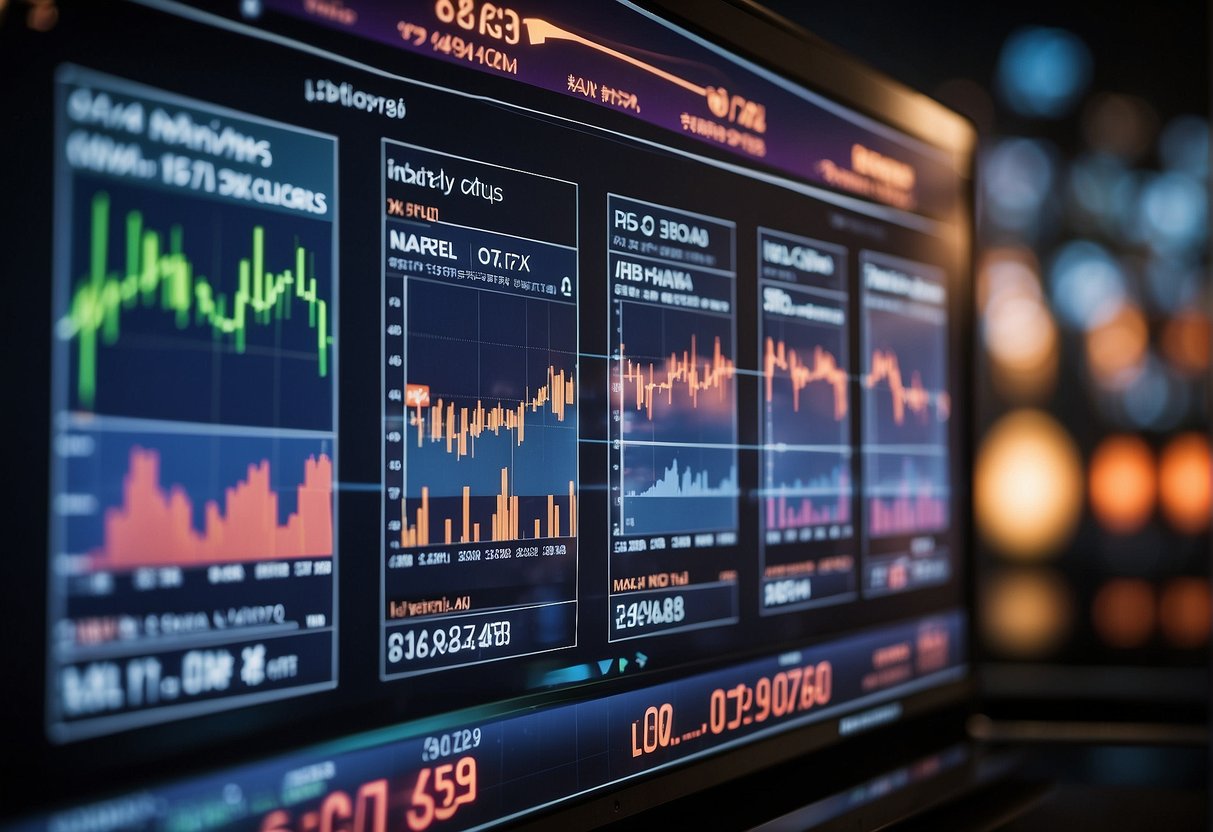
The Basics of Market Timing
Market timing is the practice of buying and selling assets such as stocks and bonds to profit from fluctuations in their prices. Investors who engage in market timing make strategic decisions to enter or exit the market based on factors like news and events in an attempt to enhance their overall profit. This requires a deep understanding of the underlying factors that can influence asset prices and market trends.
There are a variety of tools and techniques that investors employ in market timing, such as:
- Technical analysis: Using historical price data, chart patterns, and indicators to predict future price movements.
- Economic data analysis: This involves analyzing macroeconomic indicators like GDP growth, inflation, and unemployment rates to assess the economy’s health and anticipate market trends.
- Sentiment analysis: Gauging investor sentiment and market psychology to identify shifts in market dynamics.
Challenges in Market Timing
Despite its potential for profitability, market timing also carries several challenges. One major hurdle is the difficulty in accurately predicting market trends and events. No single method or tool guarantees successful market predictions, making it challenging for investors always to make the right call.
Moreover, it’s hard to assess the precise impact of news and events on market timing decisions, as multiple factors can come into play. For instance, a positive earnings report for a company may lead to a stock price increase, but macroeconomic factors or industry trends could offset the gains. This complexity makes it difficult for investors to time their trades for maximum profit consistently.
In addition, market timing can also introduce the risk of missed opportunities for investors. Attempting to time the market may result in investors missing out on gains if they wrongly predict a downturn or incurring losses if they buy too late during an upturn.
Finally, investors engaging in market timing should know the transaction costs, taxes, and potential for increased risk that may accompany frequent trades. These factors can erode potential profit and should be considered when employing a market timing strategy.
In summary, while market timing offers potential rewards, it also comes with challenges and risks. Investors must carefully weigh these considerations when deciding if it is appropriate for their investment goals.
Role of News in the Stock Market
Impact of Financial News
News plays a vital role in impacting the stock market. The market can be significantly affected by both positive and negative news. Positive news can boost investor confidence, leading to soaring stock prices. On the other hand, negative news instills fear in investors, causing stock prices to plunge. Media coverage, including television, newspapers, and social media, influences the sentiment of market participants. Investors must stay updated with relevant financial news to make sound decisions.
We can look at company-specific news to further illustrate the impact of financial news. Financial information, such as earnings reports or product launches, directly affects stock prices. For instance, when a company announces better-than-expected earnings, its stock price typically rises. Conversely, negative news may shave off significant value from the stock.
Another dimension of financial news is macroeconomic news. This involves broad economic indicators like interest rates, unemployment, and inflation data. These factors affect the overall market sentiment and price movement of various stocks.
News Sentiment Analysis
Sentiment analysis is an emerging method for understanding the impact of news on the stock market. This technique processes textual data, such as news headlines and descriptions, to identify the overall sentiment or emotion conveyed. It allows for a quantitative approach, as positive, negative, or neutral emotions are quantified and analyzed. Some experts believe news sentiment is directly linked to stock price movement.
By understanding news sentiment, investors can anticipate market reactions and design their trading strategies accordingly. Advanced analytical methods like Pearson correlation, wavelet coherence, and regression analysis are applied to study the complex interplay between news sentiment and stock prices.
Example: Companies like Microsoft (MSFT), Tesla (TSLA), and Apple (AAPL) have all been subject to the influences of news sentiment. In a study on the impact of financial news sentiment, news titles and descriptions were used to gauge the reaction of stock prices for these companies.
In conclusion, news and events profoundly influence market timing decisions. The impact of financial news and news sentiment analysis are two essential aspects for investors to consider. Staying informed and understanding the emotional context of news can provide valuable insights into market opportunities and risks.
Influence of Economic Indicators
Interpreting Economic Data
Economic indicators play a significant role in market timing decisions. Investors and market participants should closely monitor and analyze relevant economic data releases to make informed investment decisions. To navigate the impact of economic indicators, it’s essential to stay informed about upcoming indicators and their historical patterns and potential market impacts.
Economic indicators can provide different insights into market reactions, as different investors may interpret the data differently. Factors such as market sentiment, investor expectations, and widespread market practices can all influence investors’ decisions based on economic data releases. Therefore, interpreting economic data requires an understanding of its context and the ability to analyze the nuanced impacts on financial markets.
Positive vs Negative Economic Indicators
Economic indicators can be broadly categorized as positive or negative depending on their impact on the economy and, subsequently, the financial markets. Positive indicators signal improved economic conditions, such as increased employment rates or GDP growth. These indicators generally lead to a rise in stock prices and overall market optimism.
Some typical positive economic indicators include:
- Gross Domestic Product (GDP) growth
- Low unemployment rates
- Increased consumer spending
- Rise in industrial production
- Expansion of corporate earnings
Conversely, negative economic indicators indicate worsening economic conditions, such as increased inflation, high unemployment rates, or decreased consumer spending. These indicators often result in declining stock prices and an overall pessimistic outlook on the market.
Some common negative economic indicators include:
- Rising inflation rates
- Declining GDP growth
- High unemployment rates
- Decreased consumer spending
- Falling industrial production
When making market timing decisions, it’s crucial to consider both positive and negative economic indicators and analyze the potential effects on macroeconomic factors. By doing so, investors can assess the economy’s overall health and make informed decisions about their investments.
Investor Psychology and Market Timings
Effects of Investor Sentiment
Investor sentiment plays a crucial role in market timings, as it can significantly impact the trends and fluctuations observed in financial markets. For instance, news, events, and social media can shape investors’ perceptions and emotions, such as fear, optimism, and anxiety. This can lead to hurried decision-making, often driven by a sense of urgency or fear of missing out on potential opportunities.
Various factors influence investor sentiment, including macroeconomic data, geopolitical events, and individual companies’ financial statements. Positive news and events can lead to a bullish sentiment, while negative news and events can create a bearish sentiment. Investors need to understand the impact of news and events on market sentiment to make informed investment decisions.
Behavioral Biases in Trading
Several cognitive biases often influence investor behavior that can affect market timing decisions. Some common biases include:
- Overconfidence: Investors may overestimate their ability to predict market movements accurately, leading them to make risky decisions based on faulty assumptions.
- Herd mentality: Investors may follow the actions of other market participants without critically analyzing their decisions, resulting in an overreaction to market events.
- Loss aversion: Investors may be more sensitive to losses than gains, causing them to hold on to losing positions for too long in hopes of recouping losses or selling winning positions too soon, fearing potential declines.
Understanding these biases can help investors make more rational and informed decisions in the face of market volatility. To navigate through market fluctuations, investors should remain vigilant of their inherent biases, stay informed about market events, and analyze investment strategies objectively.
In conclusion, assessing the impact of news and events on market timing decisions involves understanding investor psychology, sentiment-driven perceptions, reactions to external factors, and awareness of cognitive biases. By developing this understanding, investors can make better-informed decisions to optimize their portfolios’ performance.
Price Volatility and Market Timing
Understanding price volatility is crucial for making informed market timing decisions. Here, we’ll explore methods to measure this volatility and examine historical trends to help provide guidance for your trading strategies.
Volatility Measures
A key concept when discussing market volatility is the GARCH model. This model, which stands for Generalized Autoregressive Conditional Heteroskedasticity, helps predict market volatility by incorporating the news effect on trading behavior. More details on GARCH can be found in this study on news sentiment and stock market volatility.
In addition, there are several other standard methods to measure volatility:
- StandaDeviationion – measures the degree to which returns deviate from the average; the higher the standard deviation, the higher the risk aDeviationion.
- Average True Range (ATR) – a technical indicator that calculates the average trading radiation for a specified period; it is usually applied to daily price data.
- Implied Volatility (IV) – derived from options prices and reflects the market’s expectation of future volatility.
Historical Volatility Trends
Analyzing historical volatility can provide insight into how markets may react to news and events in the future. Major events, such as geopolitical conflicts or economic recessions, can result in significant spikes in market volatility. By studying these trends, investors may have more accurate expectations of how the market might respond to similar events.
For example, the 2008 financial crisis and the COVID-19 pandemic resulted in considerable stock market volatility as investors reacted to the uncertainty surrounding these events. While no two events are the same, understanding historical patterns can help traders better time their entry and exit from the market, ultimately allowing them to take advantage of opportunities amid market fluctuations.
Trading Strategies and Market Timing
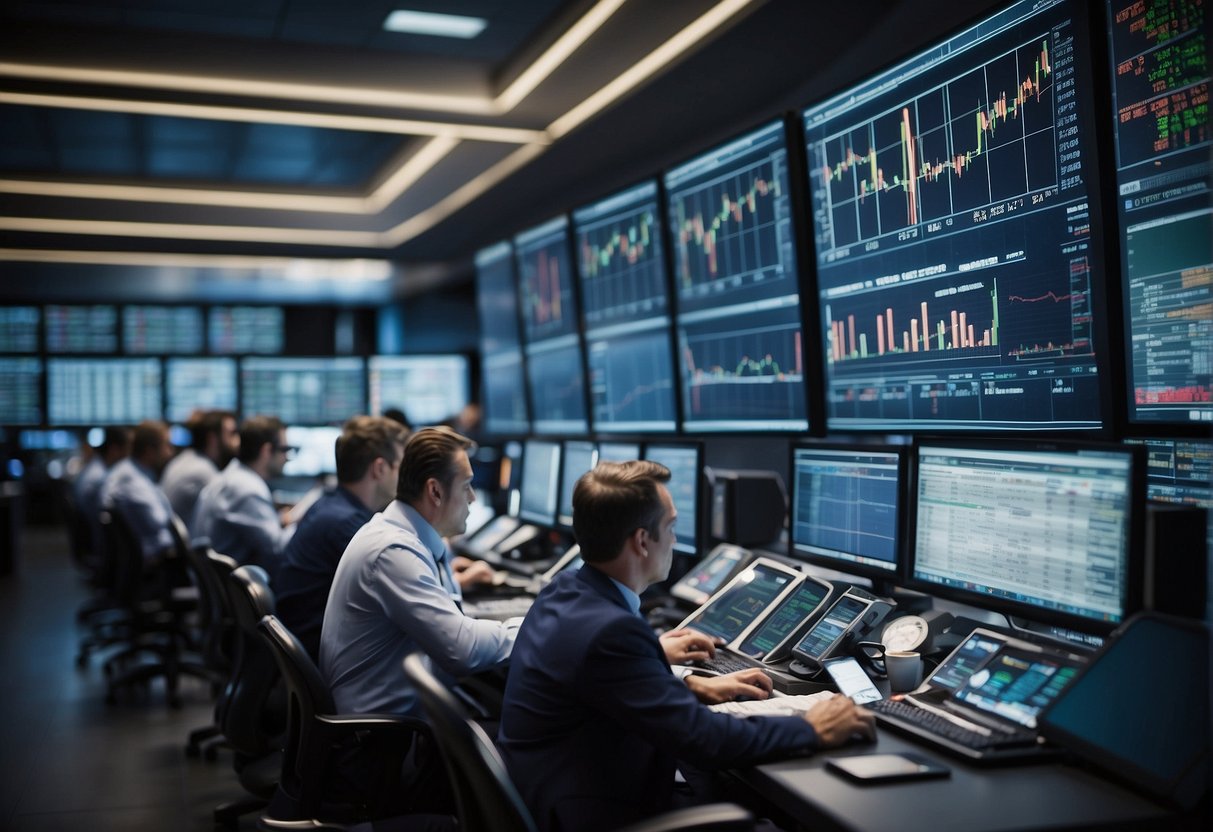
Trading Around Earnings Reports
When assessing the impact of news and events on market timing decisions, one crucial aspect to consider is trading around earnings reports. Earnings reports offer valuable insights into a company’s financial health and performance, which can significantly affect stock prices—traders anticipating these trends can decide to buy or sell securities before the market reacts.
Some standard techniques for trading around earnings reports involve analyzing historical price movements during previous earnings announcements, closely monitoring analyst estimates, and using technical indicators to identify potential entry and exit points. Successful implementation of these strategies often results from an in-depth understanding of how news events, such as earnings beats or misses, can impact various assets.
Algorithmic Trading Models
In recent years, algorithmic trading models have become more prominent in the financial markets. These sophisticated computer programs autonomously execute trades based on predetermined market conditions and specific rules, often taking advantage of rapid changes in market sentiment.
Key benefits of incorporating algorithmic trading models into market timing decisions include the ability to act swiftly upon relevant news events, the reduction of human errors, and the capacity to execute high-trade volumes with minimal slippage. Popular algorithmic strategies include arbitrage, high-frequency trading, and market-making.
Ensuring these models are thoroughly tested and continually updated to adapt to ever-changing market conditions is crucial. Trading strategies built around such models can offer traders a competitive edge in making accurate market timing decisions.
Footnotes
Impact of Social Media on Investing
Social Media Sentiments and Stock Prices
The rise of social media has significantly influenced various aspects of our daily lives, including investment decisions. Social media platforms provide a constant flow of information, which can affect individual investors’ behavioral biases and risk perception. These factors, in turn, can influence their investment choices and, ultimately, stock prices.
An investigation published in Springer explored the role of social media sentiments and their impact on stock prices. This study found a correlation between social media sentiment and changes in stock prices or trading volume. Furthermore, it was observed that social media can amplify investors’ herding behavior, leading to higher market volatility.
Case Studies of Social Media Influence
As social media continues to grow in prominence, there have been several notable case studies that showcase its influence on stock prices:
- Tesla: As this ResearchGate study shows, Elon Musk’s tweets often substantially impact Tesla’s stock price.
- Trading platforms: Retail traders using platforms like Reddit and Twitter have demonstrated their collective power in driving up stock prices, e.g., the GameStop short squeeze phenomenon.
In conclusion, the news media still plays a critical role in affecting stock prices and investment decisions. Still, the rise of social media has undoubtedly increased the speed and breadth of information dissemination. This has led to greater market volatility and a more pronounced influence of social sentiments on stock prices. As a result, investors must carefully consider the impact of social media on their market timing decisions to navigate the constantly evolving investment landscape best.
Role of Media Outlets

CNBC and Financial Market Movements
CNBC is a well-known media outlet that provides extensive coverage of financial markets, including real-time updates on market indices, securities, commodities, and currencies. The Impact of News Media and Digital Platforms suggests that media outlets like CNBC can influence investor behavior and decision-making.
During market hours, traders and investors closely follow the news and analysis provided by CNBC, which can potentially lead to market reactions. For example, exclusive interviews with vital economic figures or prominent CEOs of prominent companies may cause significant market movements if market participants perceive their statements as positive or negative. As a result, CNBC’s coverage can play a vital role in shaping investors’ perceptions and market timing decisions.
High-Frequency News-Impact Studies
High-frequency news-impact studies analyze the relationship between media coverage and short-term market reactions. These studies often utilize advanced data analysis techniques to measure the influence of news media coverage on financial markets and make predictions based on the information.
One prominent aspect of high-frequency news-impact studies is the algorithmic trading approach, in which computers are programmed to make trade decisions in response to real-time news events. This approach allows investors to capitalize on the immediate and short-term fluctuations in financial market prices.
Overall, understanding the role of media outlets such as CNBC and the implications of high-frequency news-impact studies is crucial for investors when making market timing decisions. By monitoring media coverage and evaluating its impact on financial markets, investors can better anticipate market movements and make informed investment decisions.
Quantitative Analysis in Market Timing
Quantitative Models for Forecasting
Quantitative analysis is crucial in supporting market timing decisions by providing objective insights and information to investors. These models evaluate various data sources and use mathematical and statistical techniques to inform trading strategies and risk management. Some popular quantitative forecasting models include time-series analysis, machine learning algorithms, and econometric models. Each model has its strengths and limitations, depending on the data available and the specific context of its application.
One common technique used in quantitative analysis is time-series analysis, which analyzes past trends and patterns in financial markets to identify potential opportunities and risks. Time-series analysis can help investors assess how past news and events have influenced market timing decisions, providing valuable guidance for future investments.
Another approach is using machine learning algorithms for pattern recognition and predictive analytics. These algorithms, such as decision trees, neural networks, and support vector machines, learn from historical data and can adapt to changing market conditions, providing insights into the potential impact of news and events on market timing decisions.
Finally, econometric models are employed to understand the relationships between economic indicators and market performance. These models investigate the causal relationship between macroeconomic factors and market movements and can be valuable in understanding the broader effects of news and events on market timing decisions.
Technical vs. Fundamental Analysis
In the context of market timing, it is essential to distinguish between two primary forms of analysis: technical and fundamental. Both approaches have their merits and limitations in assessing the impact of news and events on market timing decisions.
Technical analysis involves examining historical price movements and patterns to predict future market trends, using technical indicators such as moving averages, Relative Strength Index (RSI), and Bollinger Bands. This analysis focuses on past market performance and does not directly consider the fundamental factors driving price changes. Technical analysis is particularly useful for shorter-term market timing decisions, relying on chart-based tools to identify potential entry and exit points.
On the other hand, fundamental analysis considers the underlying factors that drive market performance, such as revenue growth, earnings reports, and economic indicators. Fundamental analysis is focused on understanding the intrinsic value of investments and assessing the impact of current events and news on the broader market. While typically focused on long-term investment strategies, this approach can help assess the implications of news and events on market timing decisions.
In conclusion, quantitative analysis plays an essential role in market timing decisions, and understanding the significance of news and events on market performance. Investors can use various tools, such as time-series analysis, machine learning algorithms, and econometric models, to support their decision-making process and consider technical and fundamental analysis approaches to assess the potential impact of news and events on market timing decisions.
The Role of AI in Market Predictions
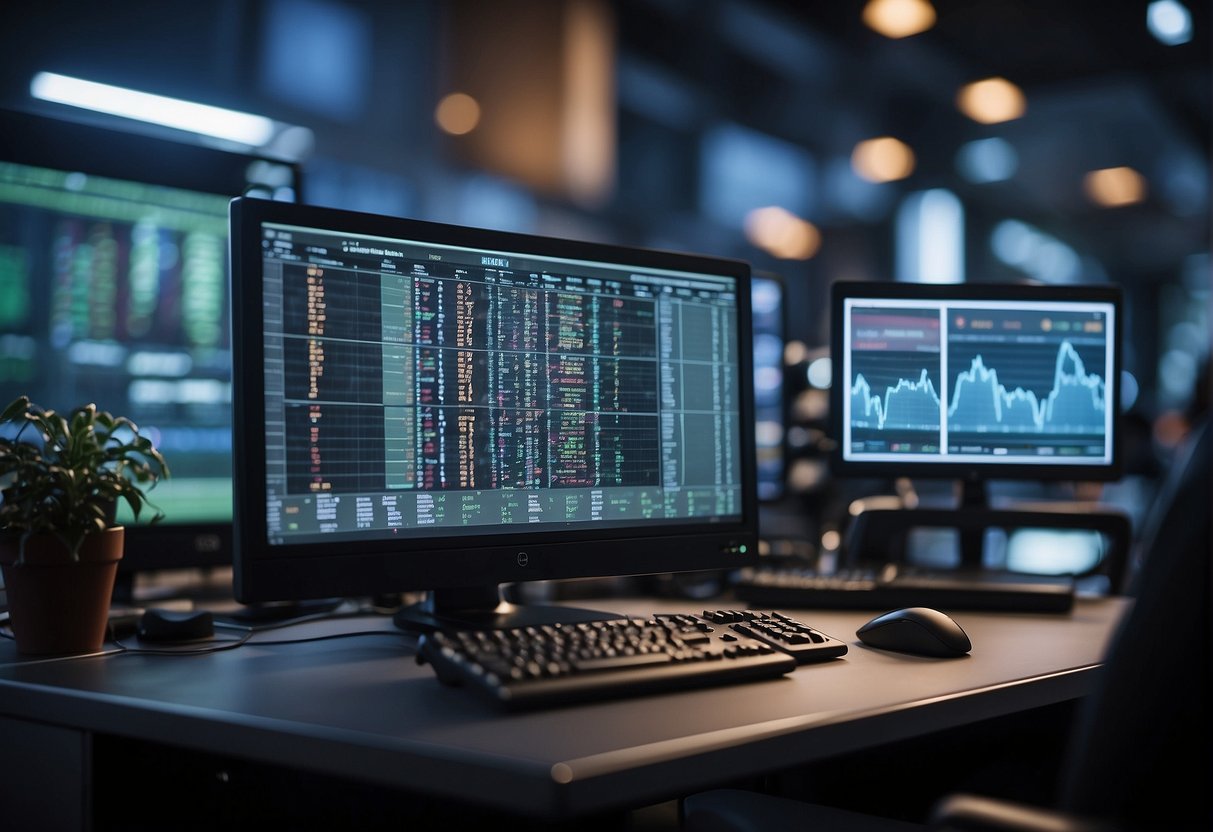
Artificial intelligence (AI) has emerged as a powerful tool for assessing the impact of news and events on market timing decisions. This section will explore how AI can enhance market predictions through sentiment analysis and predictive modeling.
AI and Sentiment Analysis
AI algorithms can analyze the sentiment of news articles, social media posts, and other textual data to gauge the market’s perception of specific events or companies. By processing vast amounts of data, these algorithms can identify patterns and trends in public opinion that may influence stock prices.
One application of sentiment analysis in finance is leveraging natural language processing (NLP) techniques to filter and interpret news articles. Through NLP, AI models can identify keywords, named entities, and overall sentiment within the text of the news article. By analyzing these elements, AI can predict the potential impact of the news on stock prices, assisting traders and investors in making informed decisions.
Predictive Modeling with AI
In addition to sentiment analysis, AI algorithms can be utilized in predictive modeling to forecast the future performance of stocks and other financial instruments. Predictive models use historical data, sentiment analysis, and other relevant inputs to project stock prices and market trends.
These advanced algorithms, such as machine learning and deep learning models, continuously learn from new data to improve their predictions. Some AI models incorporate external factors like macroeconomic indicators and geopolitical events to refine their forecasts further.
Through ThrougintegratinggI in market predictions, traders and investors can better understand the impact of news and events on market timing decisions. As AI models evolve, their predictive capabilities are expected to enhance, making financial markets more efficient and accessible.
Footnotes
Examining Stock Market Patterns
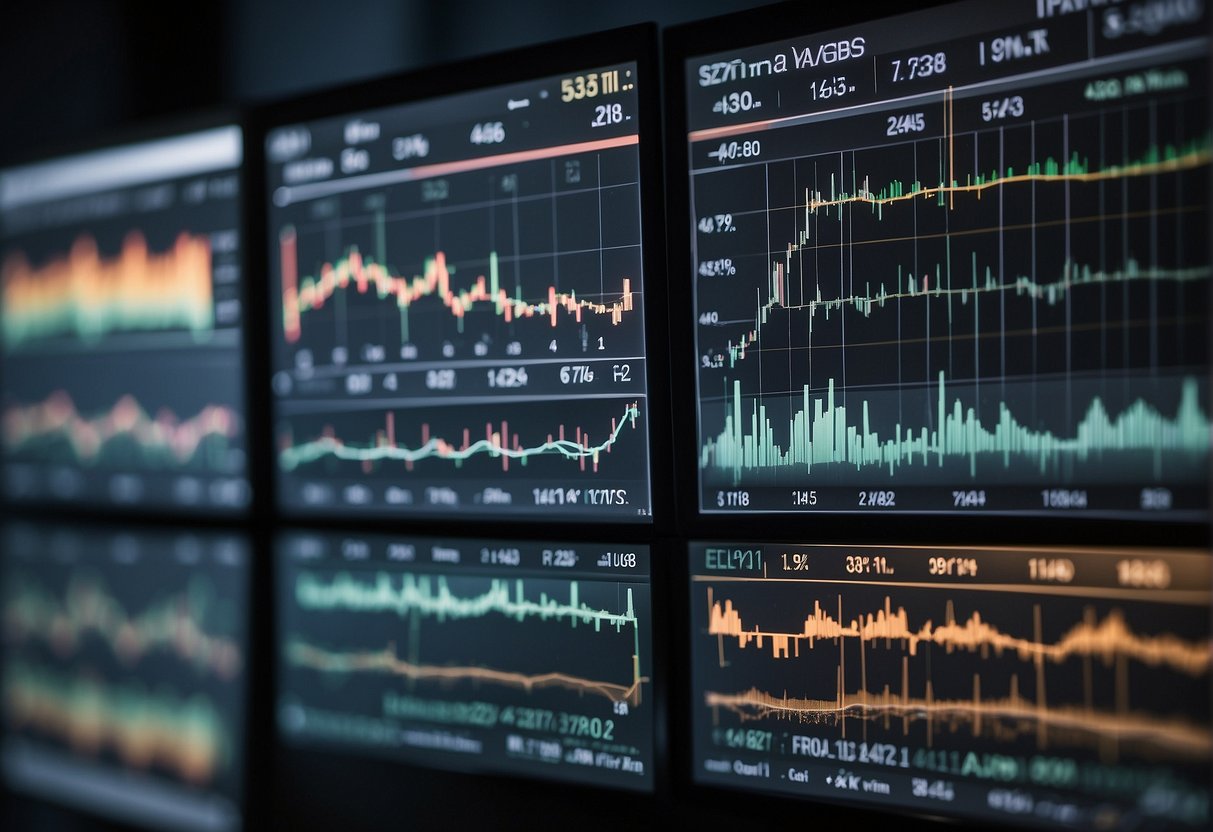
Identifying Long-Term Trade Patterns
When assessing the impact of news and events on market timing decisions, it is essential to analyze stock market patterns. Long-term trade patterns help investors make informed decisions about entering or exiting the market. Some common long-term patterns include trendlines, support and resistance levels, moving averages, and overall market sentiment. For example, a steadily rising moving average signals a bullish market, while a declining one suggests a bearish market. By examining these patterns and considering the news and events surrounding them, investors can make more informed decisions regarding market timing.
Short-Term Price Movement Analysis
In addition to long-term trade patterns, it is also critical to analyze short-term price movements, as they can provide valuable insights into the immediate impact of news and events. For instance, unexpected announcements or geopolitical events can trigger rapid shifts in stock prices. In such cases, traders might rely on technical indicators like Bollinger Bands and Relative Strength Index (RSI) to gauge market volatility and potential reversals.
While analyzing short-term price movements, it is crucial to stay informed about:
- Financial news: Monitor news stories that can impact stock prices, such as earnings releases, mergers and acquisitions, and economic data releases.
- Company-specific events: Be aware of events that can directly affect a particular stock, such as product launches, lawsuits, or management changes.
- Market sentiment: Understand the overall market sentiment, as this can indicate future price movements.
It’s important to emphasize that short-term price movements can be affected by factors such as investor psychology, market liquidity, and trading algorithms. Thus, understanding these components and how news and events influence them can help investors better assess market timing decisions.
The Buy-and-Hold Approach Versus Timing
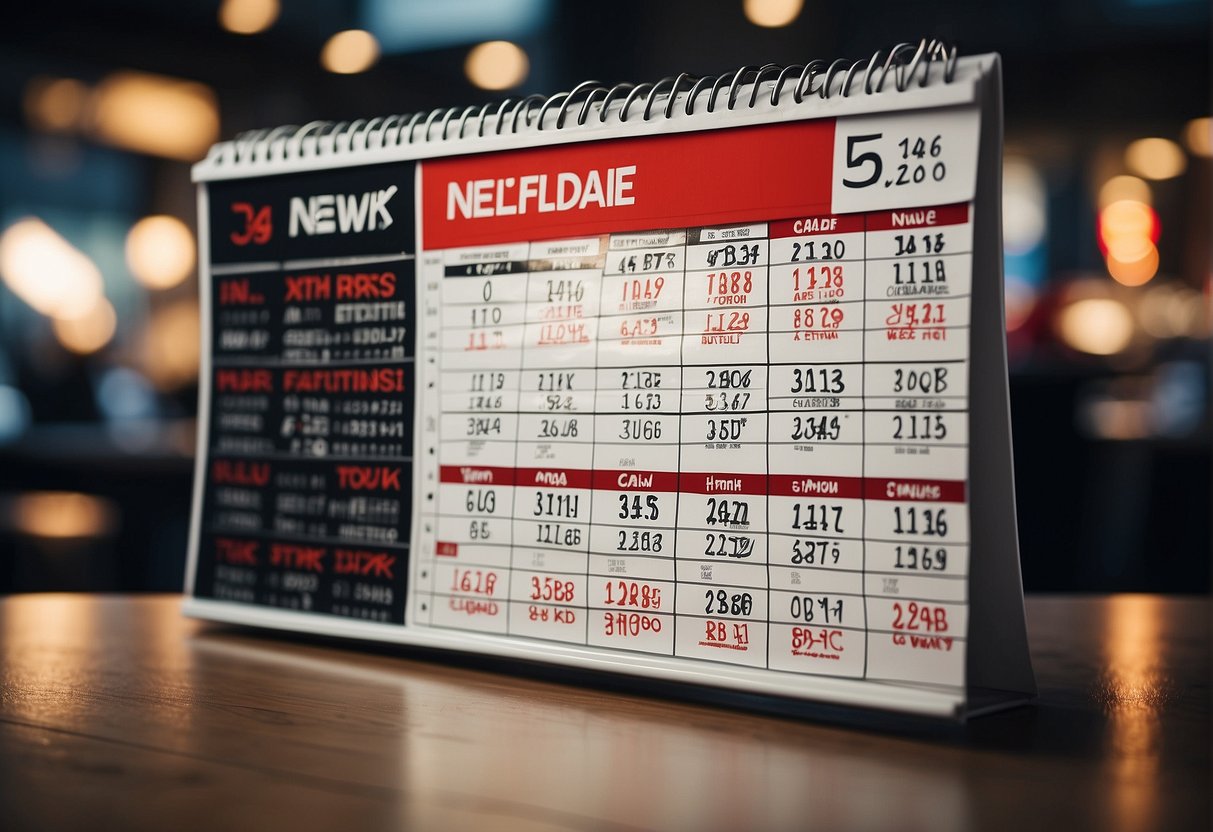
Comparing Strategies
The buy-and-hold approach in investing involves purchasing stocks or other assets and holding onto them for a ng regardless of market fluctuations. Proponents of this strategy believe that the stock market will provide a decent rate of return over the long term despite periods of volatility or decline. On the other hand, market timing focuses on predicting the market’s direction based on various indicators and adjusting an investment portfolio accordingly. The strategy aims to benefit from periods of growth and limit exposure to losses during downturns.
In comparing these strategies, we can consider risk, returns, and investment time horizon factors. Buy-and-hold investors typically take a passive approach to investing, minimizing transaction costs and accepting short-term market volatility while aiming for long-term growth. Market timers rely on active management, involving frequent buy-and-sell decisions, which can increase trading costs and tax implications.
Using the following table as an example for comparison:
| Strategy | Risk | Returns | Time Horizon |
|---|---|---|---|
| Buy-and-Hold | Lower | Long-term | Long-term |
| Market Timing | Higher | Short-term | Short-term |
Long-Term Investment Horizon
Long-term investors commonly take the buy-and-hold approach due to the benefits of compounding returns and reduced impact from short-term market fluctuations. However, market timing can be attractive to some investors as it offers the possibility of outperforming the market and mitigating risks during economic turbulence.
Assessing an individual’s investment goals, time horizon, and risk tolerance is essential before choosing a strategy. The buy-and-hold approach might be more suitable for those with a long-term investment horizon, whereas market timers might prefer a more active, opportunistic approach. Ultimately, every investor must consider their unique circumstances and financial objectives, weighing each strategy’s potential benefits and risks.
Footnotes
- Buy and Hold vs Timing the Market: What’s the Difference & Which …
- Buy and Hold vs. Market Timing: A Guide for Mutual Fund Investors
- The Misunderstood Art Of Market Timing: How To Beat Buy-And-Hold With …
- Buy and Hold vs Timing the Market: What’s the Difference & Which …
- Why Market Timing Beats “Buy And Hold” In The Long Run
- Buy and Hold vs. Market Timing: A Guide for Mutual Fund Investors
- The Misunderstood Art Of Market Timing: How To Beat Buy-And-Hold With …
Political Events and Market Reactions

Market Reactions to Political Uncertainty
Political events, such as elections, policy changes, and geopolitical conflicts, can significantly influence market prices and movements. They can also create political uncertainty, unsettling markets and affecting investor decisions. For example, unexpected election outcomes or sudden shifts in government policies can lead to increased market volatility as investors try to understand the implications of these events on the economy and businesses.
A well-known example of political events affecting market prices was the Brexit referendum in 2016, which led to significant market fluctuations due to the uncertainty surrounding the UK’s decision to leave the European Union. Similarly, market reactions to the trade war between the US and China saw increased volatility as investors grappled with uncertainty over tariffs and their impact on global trade.
To analyze the effects of political uncertainty on financial markets, consider the following:
- Changes in price levels: Political events or policy changes often cause markets to respond with either price increases or decreases, depending on the perceived impact of these events.
- Market volatility: Political uncertainty can lead to increased trading volume and fluctuations in market price as investors try to reposition their portfolios in response.
- Investor sentiment: The perception of political events, whether positive or negative, can influence the overall mood of investors, affecting market sentiment and movements.
Impact of Political Events on Market Sentiment
The impact of political events on market sentiment can be both direct and indirect, shaping investor perceptions of risk, return, and overall market dynamics. For instance, pro-business policies or regulatory changes that benefit specific industries can lead to positive investor sentiment, increasing stock prices, and overall optimism.
Conversely, geopolitical tensions, such as those caused by international conflicts or disputes between nations, can lead to negative market sentiment as investors become more cautious and risk-averse. This may result in decreased investment activity and a decline in market prices.
Investors and market participants must stay informed about political events and their potential impact on financial markets. By understanding the relationship between political events, market movements, and sentiment, they can make more informed decisions and better navigate the complexities of market timing.
Footnotes
Minimizing Transaction Costs in Market Timing
Reducing Costs Through Efficient Timing
One important aspect of market timing is minimizing transaction costs while still taking advantage of market opportunities. To achieve this, investors need to be efficient in their decision-making and trading practices. This includes carefully selecting entry and exit points and utilizing tools to monitor the market.
In addition, investors can employ strategies like dollar-cost averaging and passive investing to help spread out transactions and minimize overall costs. Furthermore, using commission-free trading platforms can considerably reduce transaction costs.
The Role of Transaction Costs in Profitability
Transaction costs play a significant role in determining the profitability of market timing strategies. These costs include brokerage fees, bid-ask spreads, and any taxes incurred during trading. They can also add up quickly, mainly when an investor executes multiple trades in a short period.
Consider the following example:
| Number of Trades | Average Cost per Trade | Total Transaction Costs |
|---|---|---|
| 10 | $10 | $100 |
| 50 | $10 | $500 |
| 100 | $10 | $1,000 |
As the number of trades increases, so do the total transaction costs. This can erode potential gains from market timing efforts. Therefore, investors must be aware of transaction costs and strive to minimize them to maximize profitability.
In conclusion, minimizing transaction costs in market timing strategies is essential for improving overall returns. Careful planning, adapting efficient trading practices, and being mindful of transaction costs can help investors achieve better results in their market timing efforts.
Frequently Asked Questions
What are the primary ways in which global events influence the stock market?
Global events can affect the stock market in various ways, such as changing investor sentiment, consumer behavior, and company performance. Events like geopolitical tensions, natural disasters, and economic crises can lead to market volatility. Investors often react to these events by adjusting their strategies, either defensively or in pursuit of potential opportunities.
How does the release of economic indicators affect market volatility and timing decisions?
Economic indicators, such as GDP growth, employment data, and inflation rates, can influence market timing decisions by providing insights into an economy’s overall health. These data points may lead to changes in investor sentiment and market volatility as investors adjust their portfolios based on their expectations about future economic performance. Understanding the implications of economic indicators can help traders make informed timing decisions.
What strategies can traders employ to capitalize on news-related market movements?
Traders can employ various strategies to capitalize on news-related market movements, such as event-driven trading, technical analysis, and fundamental analysis. Event-driven trading involves analyzing and acting upon news events, while technical analysis focuses on historical price data and chart patterns. Fundamental analysis evaluates a company’s financial health and potential impact on stock prices. Traders can combine these strategies in various ways to optimize their decision-making process.
In what ways do federal policy announcements shape investor behavior and market trends?
Federal policy announcements, such as interest rate adjustments and stimulus measures, can have significant effects on investor behavior and market trends. These announcements can influence market sentiment by changing expectations for future economic performance. For example, interest rate adjustments can affect borrowing costs, impacting consumer spending and business investment. Consequently, investors might adjust their strategies based on the anticipated market response to policy changes.
Why do markets sometimes react negatively to positive news announcements?
Markets can sometimes react negatively to positive news announcements due to investor expectations, sentiment, and pre-existing market conditions. For example, if investors expect an even more favorable announcement, they might be disappointed with the news, leading to adverse market reactions. Additionally, positive news might already be priced into the market, leading to a “sell the news” phenomenon when the announcement is made.
How can investors differentiate between short-term noise and news with long-term market impact?
Investors can differentiate between short-term noise and news with long-term market impact by focusing on the fundamentals of companies and industries, analyzing historical market reactions to similar events, and considering the potential long-term implications of the news. They should also remain disciplined in their investment strategies and avoid reacting impulsively to headlines. Maintaining a long-term perspective and staying informed about industry trends can help investors make better decisions in the face of short-term noise.
Conclusion
Various factors and strategies can be used to assess the impact of news and events on market timing decisions. One crucial factor is the occurrence of events that impact prices, such as changes in interest rates, political events, and economic data releases. These events can significantly influence asset prices, and understanding their ramifications is essential when making market timing decisions.
Monitoring financial news and global events plays a vital role in gauging market sentiment. Investors who stay well-informed can make better decisions about market timing. For instance, the announcement of a company’s earnings can impact stock prices in the short term and lead to a change in market dynamics.
Utilizing technical indicators and economic data is another approach for assessing the impact of news and events on market timing decisions. Some of the widely used indicators include moving averages, relative strength index, and trend lines. These technical tools can help identify patterns or shifts in market sentiments, enabling investors to adjust their strategies accordingly.
Finally, it’s essential to remember that market timing is risky. Predicting market movements with accuracy is complex, and even experienced investors can struggle to time the markets consistently. As a result, incorporating elements of other investment strategies, like fundamental analysis or a long-term investment approach, can be helpful.
In conclusion, understanding the impact of news and events on market timing decisions involves staying informed about current events, utilizing technical indicators, and acknowledging the inherent risks associated with market timing. A well-rounded approach that combines various investment strategies can increase investors’ likelihood of success.




